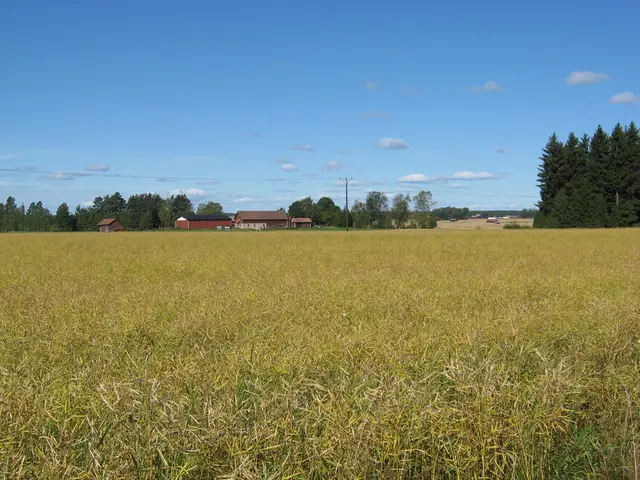Homeowners Embrace 'Greenscaping' for Eco-Friendly Landscapes
Homeowners are embracing 'greenscaping', an eco-friendly approach to landscaping that protects the environment while maintaining property aesthetics. This method involves several practices that reduce waste, conserve resources, and promote biodiversity.
At the heart of greenscaping is the use of native plants. These species require less maintenance and support the local ecosystem by providing food and shelter for native wildlife. Unlike non-native ornamentals, they thrive in local conditions, reducing water usage.
Recycling lawn waste is another key practice. Grass clippings and leaves can be recycled back into the lawn or used as mulch, providing beneficial nutrients for plants and reducing waste sent to landfills. Composting household items serves a similar purpose, keeping waste out of landfills and enriching soil.
Organic fertilizers and resistant cultivars are preferred over synthetic ones. These choices reduce the need for chemical treatments, preserving soil health and minimizing environmental impact. Collecting rainwater for garden use is also encouraged, reducing water waste and conserving this precious resource.
Watering plants wisely, applying water only when needed and directly to the soil, further conserves water. Leaving grass clippings on the lawn after mowing also returns nutrients to the soil, reducing the need for fertilizers and associated environmental impacts.
Greenscaping offers numerous benefits, including cleaner water, less pollution, preservation of native species, improved pollination, and reduced waste in landfills. By adopting these practices, homeowners can maintain beautiful landscapes while contributing to environmental sustainability.
Read also:
- Johnson & Johnson collaborates with Ho Chi Minh City Oncology Hospital to enhance cancer treatment availability
- Jaguar Swimming Distance Breaks Species Record, Puzzles Researchers
- Data Analysis Techniques for Farming Decision Accuracy Enhancement
- Affordable Decisions that Could Boost Your Life for the Better







